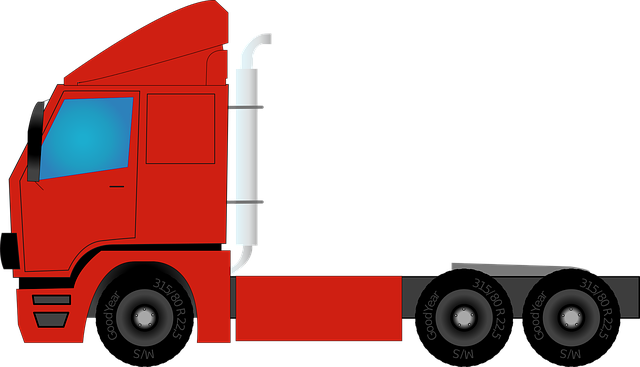Looking to register your car in California? This guide walks you through the process, ensuring a smooth transition. From understanding key requirements like DMV vin verification to submitting necessary documents and finalizing the title transfer, we’ve got you covered. Whether registering online or in-person, follow these steps for a successful and efficient car registration experience in California.
- Understand California Car Registration Requirements
- Gather Necessary Documents for VIN Verification
- Perform DMV Online Registration or In-Person Visit
- Submit Proof of Insurance and Vehicle Ownership
- Finalize Title Transfer and Receive Registration Papers
Understand California Car Registration Requirements

Before registering your car in California, it’s crucial to understand the state’s specific requirements. The California Department of Motor Vehicles (DMV) mandates a thorough process that includes a vehicle inspection and verification of the car’s unique identifier, known as the Vehicle Identification Number (VIN). This VIN verification is a critical step to ensure the vehicle’s authenticity and history are accurately represented.
The process involves providing documents such as proof of ownership and insurance, along with completing necessary forms. Additionally, many Californians opt for a mobile VIN verifier, allowing them to conduct this inspection conveniently without visiting a DMV office. This modern approach streamlines the registration process, making it more accessible and efficient for residents.
Gather Necessary Documents for VIN Verification

To register your car in California, you’ll need to go through a process known as DMV VIN verification. Before heading to the DMV, ensure you gather all the essential documents required for this inspection. The primary document is the Vehicle Identification Number (VIN) report, which can be obtained from various sources like the vehicle’s manufacturer or trusted online platforms. This unique 17-character code is crucial for identifying your car’s make, model, and year.
Additionally, you’ll need to provide proof of ownership, typically through a title document, as well as valid identification such as a driver’s license. If you’ve recently purchased the vehicle, a bill of sale or purchase agreement may be required. For convenience, consider utilizing mobile vin verification services that can assist with this step, ensuring a smoother process for registering your car in California.
Perform DMV Online Registration or In-Person Visit

You have two options for registering your car in California: perform the process online through the Department of Motor Vehicles (DMV) or visit a DMV office in person. Both methods require accurate information and necessary documents, so ensure everything is in order before you begin. If choosing the online route, you’ll first need to conduct a DMV VIN verification, which involves checking your vehicle’s unique identifier against their records to ensure it’s not stolen or has any outstanding issues. A mobile VIN verifier can streamline this process by allowing you to complete the inspection from the comfort of your home.
Once your VIN inspection is done and all paperwork is in order, whether through online submission or an in-person visit, the DMV will review your application and issue a registration certificate. This typically takes a few business days, after which your vehicle will be officially registered with the state of California.
Submit Proof of Insurance and Vehicle Ownership

To register your car in California, you’ll need to provide proof of insurance and vehicle ownership. This is a crucial step in the registration process and can usually be done through your insurance provider or a designated vehicle inspection facility. Your insurance company will require a valid policy along with a completed application form, which includes details about your vehicle’s make, model, year, and unique Vehicle Identification Number (VIN). The VIN is a 17-character code that acts as a fingerprint for your car and is typically located on the vehicle’s registration label or in its engine compartment.
For convenience, many California residents opt for a mobile vin inspection or use a mobile vin verifier to streamline this process. These services send a professional to your location to verify your vehicle’s details, including the VIN, making it easier and faster to register your car with the Department of Motor Vehicles (DMV). This step is essential to ensure accuracy and prevent any potential issues during registration.
Finalize Title Transfer and Receive Registration Papers

After successfully completing the vehicle history report and ensuring all necessary documents are in order, the next step is to finalize the title transfer process at the DMV (Department of Motor Vehicles). This involves submitting the completed forms along with any required fees and providing proof of insurance. Once your application is approved, you’ll receive your new registration papers. These papers confirm that your vehicle is legally registered in California and include important details such as your vehicle identification number (VIN), which has been verified by the DMV through a process known as VIN verification.
A mobile vin verifier or even a simple mobile vin inspection can be helpful during this stage to ensure all information matches across documents. With these tools, you can quickly verify the VIN and cross-reference it with the data from your vehicle history report, giving you peace of mind before submitting your application.
Registering a car in California involves understanding key requirements, gathering essential documents like a Vehicle Identification Number (VIN) for successful DMV vin verification, and completing either an online or in-person registration. After verifying ownership, you’ll submit proof of insurance and complete a title transfer to receive your official registration papers. This process ensures legal compliance and allows you to hit the road with confidence.
